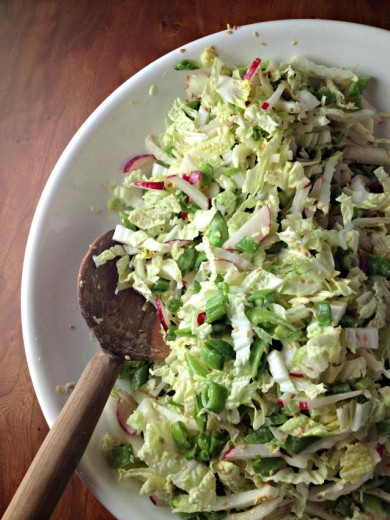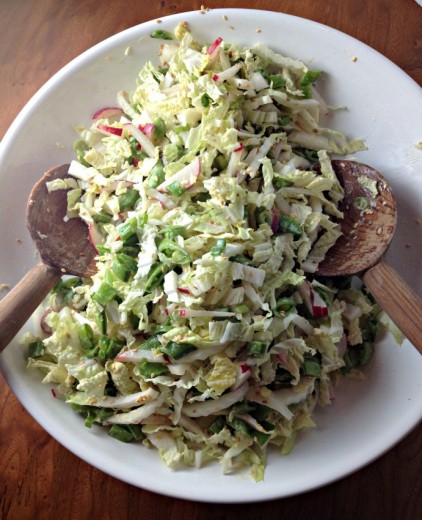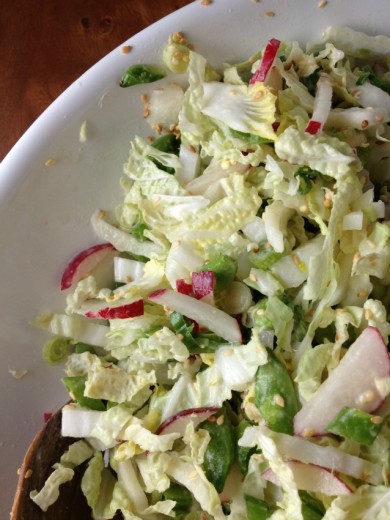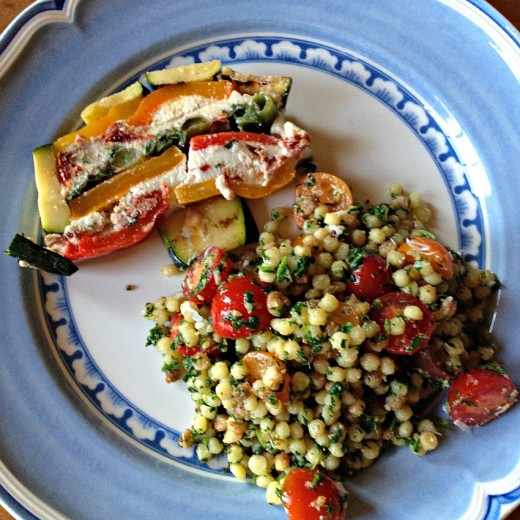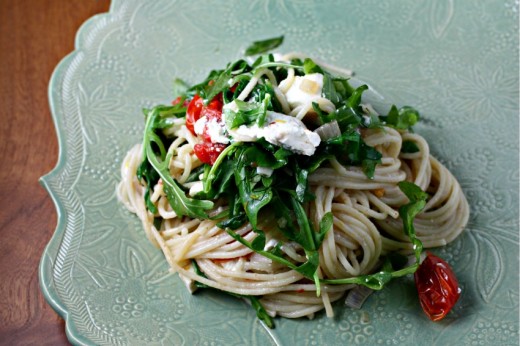I lived almost my entire life in Seattle and I will tell you that winter is not the cruelest season. Winter can be terrible in most parts of the country but in the Northwest, I never had to worry that my kids would actually freeze if they forgot their coat at school. As long as you had the right gear, you could be outside all season. I was thankful for no biting wind, almost no snow, and none of the electric shock you get in colder climates when you take off your overcoat. (And you don’t really have to wear an overcoat.) Winter was no walk in the park but it was much milder and much better than many other places.
Spring is when I would start to go nuts. Because most years, there isn’t really a spring in Seattle. The winter just drags on and on. You will get a week or so of nice weather and everyone and their mother/grandmother/uncle/dog will be outside and everyone will be oh so optimistic that winter is over only to have it return, with a vengeance. Some people say if you are going to live in Seattle, you have to plan to get away in February, but I would change that month to May. February is when you can take refuge in the fact that you aren’t shoveling snow out of your driveway, or wondering if your car is going to start, or hoping your pipes don’t freeze. May is when you can’t quite understand why people are talking about spring and grilling and eating outside. It is also when you might be cursing the fact that it is light until almost 10pm but you can’t enjoy it because it is raining. May is when I would question my choice to live in that city. May is when I would long for spring but never really feel it.
To add insult to injury, the spring produce would take forever to come in. Seattle markets, when they are in their prime, are a thing of beauty and glory. Early spring is not that time. Early spring, spring at all really, is meager and frustrating. While seemingly the rest of the country is enjoying all the lovely springy green things, Seattle has just not quite caught up.
Because I shop at the farmers markets and because I cook seasonally, I am very in tune to seasonal transitions in produce. At no time are those transitions more remarkable than going from winter to spring. You essentially go from root-type vegetables that need to be roasted or stewed or braised to make them tasty, to gorgeous green things that only need a minute on the grill or in the oven or on the stovetop – or no cooking at all! – to make them tasty. I found this soup on Epicurious when I was searching for a recipe for garlic scape pesto (it was actually in the May 2013 Bon Appétit). It immediately brought back memories of my childhood because my mom used to make me egg drop soup all the time. The one she made me was very kid friendly, i.e. no vegetables, and I loved it. In this version, the vegetables are definitely the star of the show but the egg saves it from just being, you know, a vegetable soup. I served this as a main course and thought it needed a little something to make it more substantial, so I included a dollop of red quinoa.
One Year Ago: Tartines with Gruyère and Greens
Two Years Ago: Shaved Spring Vegetable Salad
Three Years Ago: Rhubarb Bette
Four Years Ago: Rosemary Raisin Pecan Crisps
Five Years Ago: Roasted Potatoes and Onions with Wilted Greens (also the story of when I stopped eating meat)
Spring Egg-Drop Soup
Bon Appétit
Serves 4
The only changes I made to the recipe below is that I used less olive oil to sauté and served the quinoa on top. I would say it serves 3 as a main course. I spring garlic cloves instead of the garlic scapes only because I used all mine in the pesto.
¼ cup olive oil
2 medium carrots, peeled, chopped
6 small spring onions, bulbs only, coarsely chopped (about 1 ½ cups)
3 medium spring garlic bulbs, 1-2 garlic scapes, or 2 regular garlic cloves, thinly sliced
Kosher salt
4 cups low-sodium chicken broth
½ pound asparagus, sliced on a diagonal ½” thick
¼ pound sugar snap peas, sliced on a diagonal ¼” thick
2/3 cup shelled fresh peas (from about 2/3 pound pods)
2 large eggs
1 tablespoon grated Parmesan plus more for serving
¼ cup torn fresh basil leaves
¼ cup torn fresh mint leaves
1 ½ teaspoons (or more) fresh lemon juice
Cooked red quinoa (optional)
Heat oil in a large heavy pot over medium heat. Add carrots, spring onions, and garlic and season with salt. Reduce heat to medium-low, cover, and cook, stirring occasionally, until vegetables are soft, 15-20 minutes.
Add broth and bring to a boil. Add asparagus, sugar snap peas, and peas and cook until vegetables are crisp-tender, about 3 minutes.
Meanwhile, beat eggs in a small bowl with 1 tablespoon Parmesan, a pinch of salt, and 1 tablespoon water.
Reduce heat to low and stir basil and mint into soup. Drizzle in egg mixture in 4 or 5 spots around pot. Let stand for 1 minute so egg can set, then gently stir in 1 ½ teaspoons lemon juice. Season soup with salt and more lemon juice, if desired. Serve soup topped with more Parmesan and a dollop of quinoa, if desired.

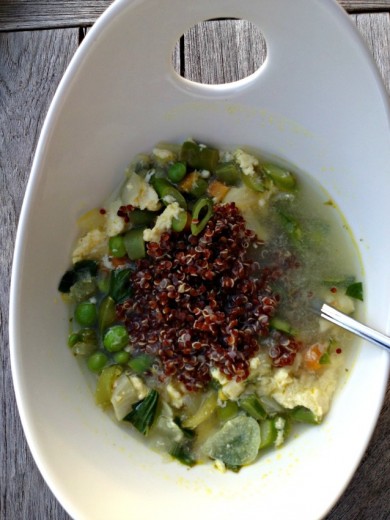
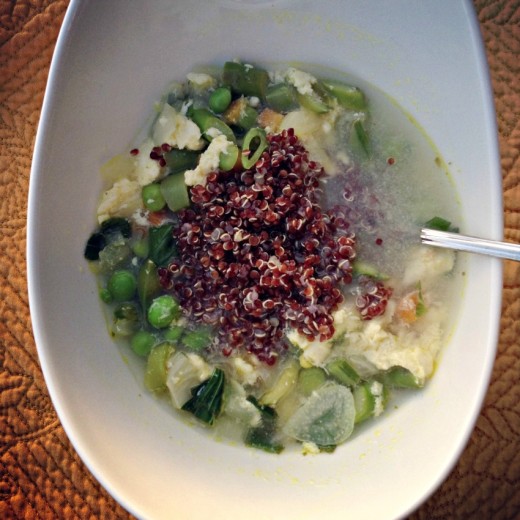

 Share
Share